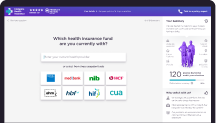Every year, health funds submit a request to the Commonwealth Minister for Health to change their premiums (rates), known by most members as the rate rise. These price rises usually come into effect on the 1st of April each year.
According to the Private Health Insurance Ombudsman, premiums usually increase as a result of rising costs and changes to services. By making changes to the premiums annually, health funds are able to remain financially viable businesses.
Why do the premiums always seem to go up?
The annual price increase can be narrowed down to two main factors:
- Cost of medical and hospitals – the expenses related to hospital care and medical services continue to increase. This can be attributed to our aging population, wage increases and the cost of purchasing the latest innovative technology.
- Increase of healthcare reliance – As our population rises and the prevalence of chronic illness increases, so does our reliance on high quality medical services.
With rising costs, health funds need to continue to increase their premiums to continue fulfilling their obligations to members.
Who approves the annual rate rises
It’s not the health funds themselves who get to decide how much they will increase their premiums each year. They submit their proposed increase to the Commonwealth Minister for Health, who then analyses all requests to ensure they’re required, justified and fair to consumers.
If a health fund is unable to justify exactly why they need to raise their premiums, and by how much to absorb the increasing costs, the request will be rejected. This is what happened in 2001. As a result, people with private health insurance enjoyed a year of no changes to their premiums. In 2016, the Health Minister asked most funds to provide more information to justify premium rises. As a result, 20 funds subsequently lowered their premium increase requests.
Should you drop your cover altogether?
The annual increases to the cost of private health insurance cause some people to consider taking the risk of dropping their health cover all together. But that forces you to rely solely on the public health system, which can have lengthy delays for non-emergency treatment. Furthermore, if your age means you’re required to pay the Lifetime Health Cover loading you will lose your original LHC Entry Age, which means it will be more expensive for you to restart health insurance in the future. And if you’re earning over a certain amount per year but have no health insurance then paying the Medicare Levy Surcharge becomes a factor. Dropping your cover altogether is a drastic move and not a decision you should take lightly.
Can you avoid this year’s rate rise?
If you pay next year’s annual premium in advance before the price changes on April 1, you make that payment at this year’s price. Most funds allow you to do this. This means if your premium is going to increase after April 1, you won’t be affected. It’s important to keep in mind that not all policies increase on 1st April. Some policies will increase, others may remain the same, and some will even decrease. Therefore, there are no guarantees you’ll be making a huge saving by locking in your premium rate. It’s also important to be aware that when it comes to renewing your insurance next year, that will be at the post-April 1 rate. So you can’t avoid it, but you can delay it.
Compare health funds
If the premium rate rises have made you reconsider your private health insurance, it’s worth taking the time to make sure you’re not paying more than you need to. Our advice is to not just look at the annual figure, but also check the features of your policy are relevant to your current needs. Jump on the Compare Health Insurance Online comparison tool and compare your policy with our range of health funds to see if you could make any savings. If you’re strapped for time, ask one of our team to do the comparison for you, call us on 1300 73 96 92, we’re more than happy to help.





